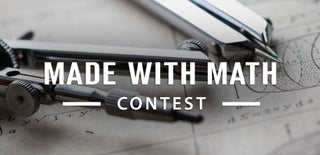Introduction: Carousel II
"Carousel II" is an Autodesk Fusion 360 update of my original Carousel model published over six years ago.
The "secret" to how this model operates is the hidden 3D printed "sin wave" contour in the interior of the base. As the motor rotates the carousel, the lower rods of the horses ride up and down the sin wave contour thus generating the up and down motion of the horses and flags. There are four complete sin wave cycles in the base, so the horses and flags rise and fall four times each journey around the carousel.
The carousel consists of three 3D printed components: "Base.stl", "Carousel, Base.stl" and "Carousel, Canopy.3mf". Add to that the five "Horse.3mf" and "Flag.stl" 3D printed components, and the total 3D printed component count for this model is thirteen.
The model is driven by an N20 6VDC 50RPM gear motor powered by a 1.5VDC power supply at 15ma. The model, as shown in the video, is also easily solar powered.
Designed using Autodesk Fusion 360, sliced using Cura 4.3.0, and printed in PLA on an Ultimaker 3+ Extended and an Ultimaker S5.
One final note, I receive no compensation in any form whatsoever for the design, equipment, parts and/or materials used in this model.
Supplies
I used the following supplies to complete this model:
- Ultimaker Red PLA.
- Ultimaker White PLA.
- Solder.
- 6" length of 26 AWG red wire.
- 6" length of 26 AWG black wire.
Step 1: Parts.
For power supply and/or battery operation, I acquired the following non-3D printed parts:
- One N20 6VDC 50RPM gear motor.
- One 1.5VDC power supply capable of 40ma (a single 1.5VDC battery will work great).
For solar power operation, I acquired the following non-3D printed parts:
- One solar panel (https://www.adafruit.com/product/200).
- One solar lithium battery charger (https://www.adafruit.com/product/390).
- One lithium battery (https://www.adafruit.com/product/258).
I 3D printed the following parts at .15mm layer height, 20% infill with no supports:
- Base.stl
- Carousel, Base.stl
- Carousel, Canopy.3mf
- Flag.stl
- Horse.3mf
Note the files with the extension ".3mf" are dual extrusion files. If you are unable to print these files on a single extrusion printer, let me know and I will convert them to single extrusion.
Prior to assembly, test fit and trim, file, sand, etc. all parts as necessary for smooth movement of moving surfaces, and tight fit for non moving surfaces. Depending on you printer, your printer settings and the colors you chose, more or less trimming, filing and/or sanding may be required. Carefully file all edges that contacted the build plate to make absolutely certain that all build plate "ooze" is removed and that all edges are smooth. I used small jewelers files and plenty of patience to perform this step.
If you experience difficulties snapping "Carousel, Base.stl" to "Carousel, Canopy.3mf" I recommend using a 3.95mm (5/32") drill bit to clean out the round holes in "Carousel, Canopy.3mf".
Step 2: Assemble the Base.
To assemble the base, I started by soldering the red and black wires to the motor terminals such that the motor shaft rotated clockwise as viewed from the motor shaft end of the gear motor.
Next, I threaded the motor wires through the top of the "Base.stl" tower and out the side wiring tunnel, then pressed the motor into position such that that top motor plate was flush with the top of the tower.
Step 3: Assemble the Carousel.
To assemble the carousel, I positioned the five "Horse.3mf" around "Carousel, Base.stl" in the rectangle holes such that each horse faced in the clockwise direction as viewed from the top of the carousel.
Next I loosely positioned "Carousel, Canopy.3mf" over this assembly, carefully rotated the entire assembly upside down, aligned the rectangular horse rods with the rectangular holes in the canopy and the round base rods with the round holes in the canopy, then carefully pressed the assembly together making certain that all horses would easily rise and fall.
Step 4: Final Assembly.
For final assembly, I started by rotating the carousel until the motor shaft hole flat aligned with the gear motor shaft flat then pressed the carousel onto the motor shaft until the top surface of the carousel base aligned with the top outer ring of the base. At this point I applied power to make sure there there was no binding (if binding or popping occurs, the carousel is pressed too far onto the base).
Next I pressed the flags into position in the mounting holes of each horse and applied power.
And that is how I 3D printed and assembled "Carousel II".
I hope you enjoyed it!

Participated in the
Made with Math Contest



















